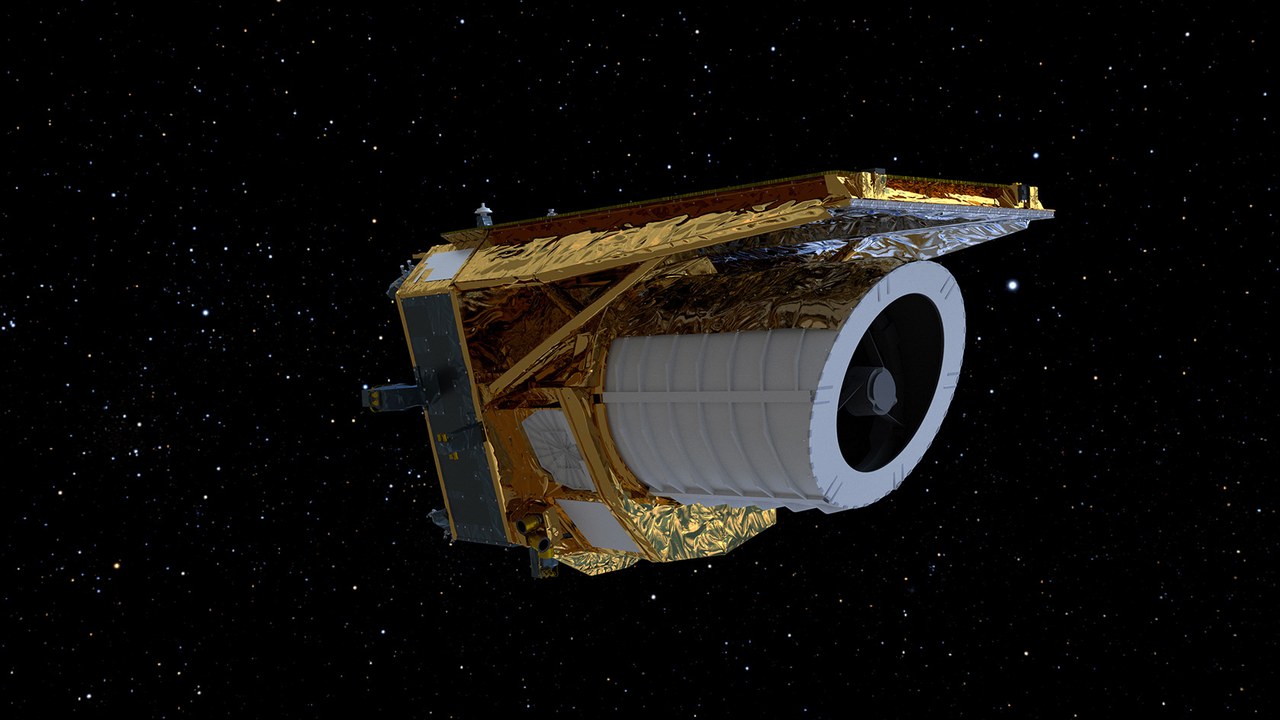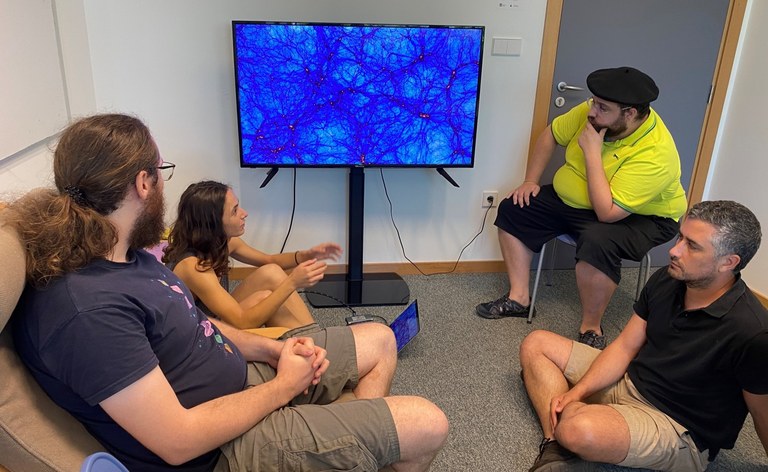DIPC scientists are part of the EUCLID Consortium that will study the dark Universe
On July 1st, the EUCLID space telescope started its journey into outer space on an important mission: to seek further clues about the origin and fate of our Universe. Over the next 6 years, it will record a three dimensional map of cosmic structure, employing galaxies up to 10 billion light years away from Earth. Researchers from the Euclid Consortium — including DIPC scientists — hope that this unique recording of the cosmic web will reveal fundamental aspects about the nature of Dark Matter and Dark Energy as well as the law of gravity

Dark Matter and Dark Energy together form nearly 95% of the Universe. However, we know very little about them. For this reason, they are considered one of the biggest mysteries in science. The recently-launched EUCLID satellite might help to unravel the nature of the “dark universe”.
Dark Matter is a form of matter that does not emit, absorb, or reflect light. Despite being invisible, we know it must be there: the observed arrangement of galaxies cannot be explained by Einstein’s General Relativity unless there is more mass than what we can see. Dark energy instead, is thought to be responsible for the accelerated expansion of the Universe. However, we have not detected it directly nor seen its effects elsewhere in the cosmos.
One way to study Dark Matter is through its interaction with other forms of matter and light through the gravitational force. On the other hand, it is possible to study Dark Energy by carefully measuring the rate of expansion of the cosmos and the spatial distribution of galaxies within. EUCLID is the first space satellite fully devoted to making these precise measurements.
Successfully launched on July 1st by the European Space Agency (ESA) and Space-X, on board of EUCLID there is an instrument which can image galaxies with tremendous precision to detect the deformation caused by the gravity of Dark Matter. Additionally, the telescope contains another instrument designed to measure the distance to hundreds of millions of galaxies across cosmic time.
More than 2,600 researchers from 100 institutes in Europe, the USA, Canada and Japan are part of the ESA’s EUCLID Consortium. They are working on a wide range of questions, from defining the scientific objectives and constructing the measuring instruments to analysing and evaluating the data. “At the DIPC we are generating computational models that will help to interpret EUCLID measurements, and thus distinguish theories of gravity, the presence of fundamental particles such as neutrinos, and the parameters that determine the evolution and future of the universe”, says Raul Angulo, an Ikerbasque Research Associate at DIPC whose work focuses on creating virtual universes using supercomputers.
One month after its launch, the EUCLID space telescope will reach its destination in space. The scientific measurements in the universe will take about six years, and are expected to provide astronomers and cosmologists with an unique view of our Universe.
The Euclid Consortium
The Euclid Consortium (EC) is an organisation that brings together teams of researchers in theoretical physics, particle physics, astrophysics and space astronomy, as well as engineers, technicians, and management and administrative staff working in public research laboratories and contributing to the Euclid mission. Together with the European Space Agency (ESA) and aerospace industry they are part of the Euclid Collaboration.

